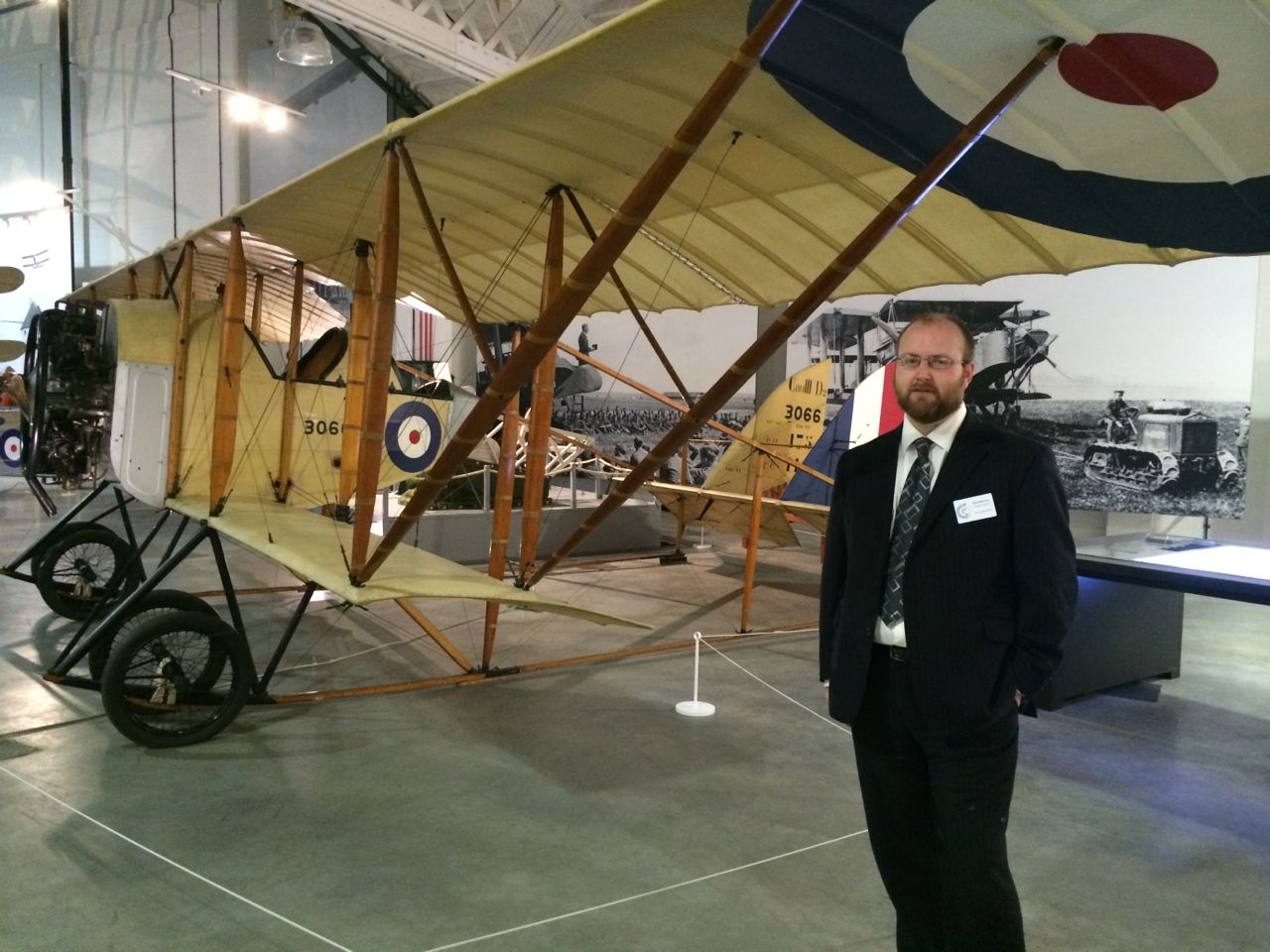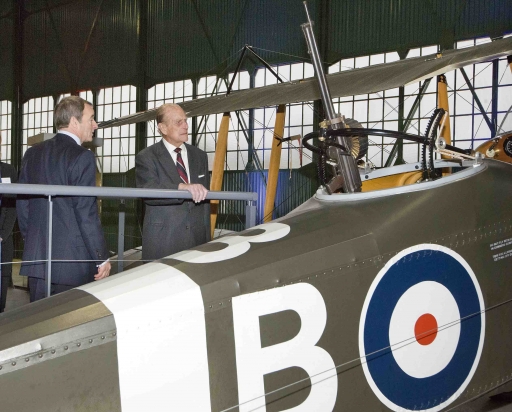A new exhibition exploring the rapid growth of air power during the First World War has been officially opened by the Duke of Edinburgh at the Royal Air Force Museum in London.
Claude Grahame-White, who pioneered British aviation at the Hendon site before the war, made this prediction in 1912: “The use of well-trained corps of military airmen will revolutionise the tactics of war.”
And so it was to prove, as the ‘First World War in the Air’ exhibition seeks to demonstrate, with a lavish array of aircraft, documents and photos from the RAF Museum’s collections.
By 1918, aviation had evolved from simple reconnaissance to a new means of attack with the development of fighters and ever-larger bombers to strike at cities for the first time.
Ross Mahoney, the RAF Museum’s Aviation Historian, told Centenary News: “The underlying theme of the exhibition is he who controls the air, controls the battlefield.”
“It’s about the importance of air power and the increasing sophistication of air power during the course of the First World War, to the point that in 1918, it’s a vital element of the Western Allies’ ability to win the war.”

Aviation historian Ross Mahoney with a French-built Caudron G.3, using for training, reconnaissance and ground strafing (Photo: Centenary News)
Some figures highlighted at the entrance to ‘First World War in the Air’ – opening to the public on December 4th 2014 – reveal the scale of what the Museum calls the ‘often overlooked role’ of aviation in 1914-18.
At the outset, barely more than 2,000 people were serving with Britain’s Royal Flying Corps and the Royal Naval Air Service. By 1918, the newly-formed Royal Air Force numbered more than 313,000. Over 9,000 members of the British air services were killed.
The RAF Museum harnesses both old and new technologies to tell their stories. Photos, letters and documents – many of them on public display for the first time – are accompanied by online access to the archives. Especially poignant is a ‘daily roll of honour,’ listing air service casualties on the day they fell.
14 aircraft
Dominating the exhibition hall are 14 aircraft, some of them First World War veterans, others rebuilds using original parts, showing how designs quickly evolved from the distinctly flimsy-looking planes of 1914 to the likes of the much more sophisticated Sopwith Camel.
Ross Mahoney explains: “At the end of the war we have large bombers, and we have large flying boats conducting maritime air operations, as well as these quite sleek-looking fighter aircraft that are, for the British certainly, conducting offensive air operations over the Western Front.”
Fittingly, the exhibition is housed in a building which was once a First World War aircraft factory, run by Claude Grahame-White, who made Hendon a by-word for aviation. His office has been recreated, complete with period detail, in the 1915 aerodrome watch tower which now serves as the exhibition entrance.
‘First World War in the Air’ opens at the RAF Museum in Hendon on December 4th 2014. A companion exhibition will open at the Museum’s Cosford site, in the West Midlands, in 2015. The project was made possible with a £900,000 grant from the UK’s Heritage Lottery Fund.
Source: RAF Museum
Images courtesy of ©Trustees of the Royal Air Force Museum (Duke of Edinburgh) and Peter Alhadeff, Centenary News (Caudron G.3)
Posted by: Peter Alhadeff, Centenary News
